# 35 This Is What Quality Colombian Coffee Production Really Looks Like
On the picturesque town of Jardín, family farming, and climate change
We awake to a world slumbering in mist. The picturesque town of Jardín nestles in the folds of the Andes, 1800 m (5,800 ft) above sea level, and is pleasantly fresh in the morning. But as we drink our first cup of coffee on the hotel terrace, the clouds burn off and hummingbirds appear from the lush green to say hello.
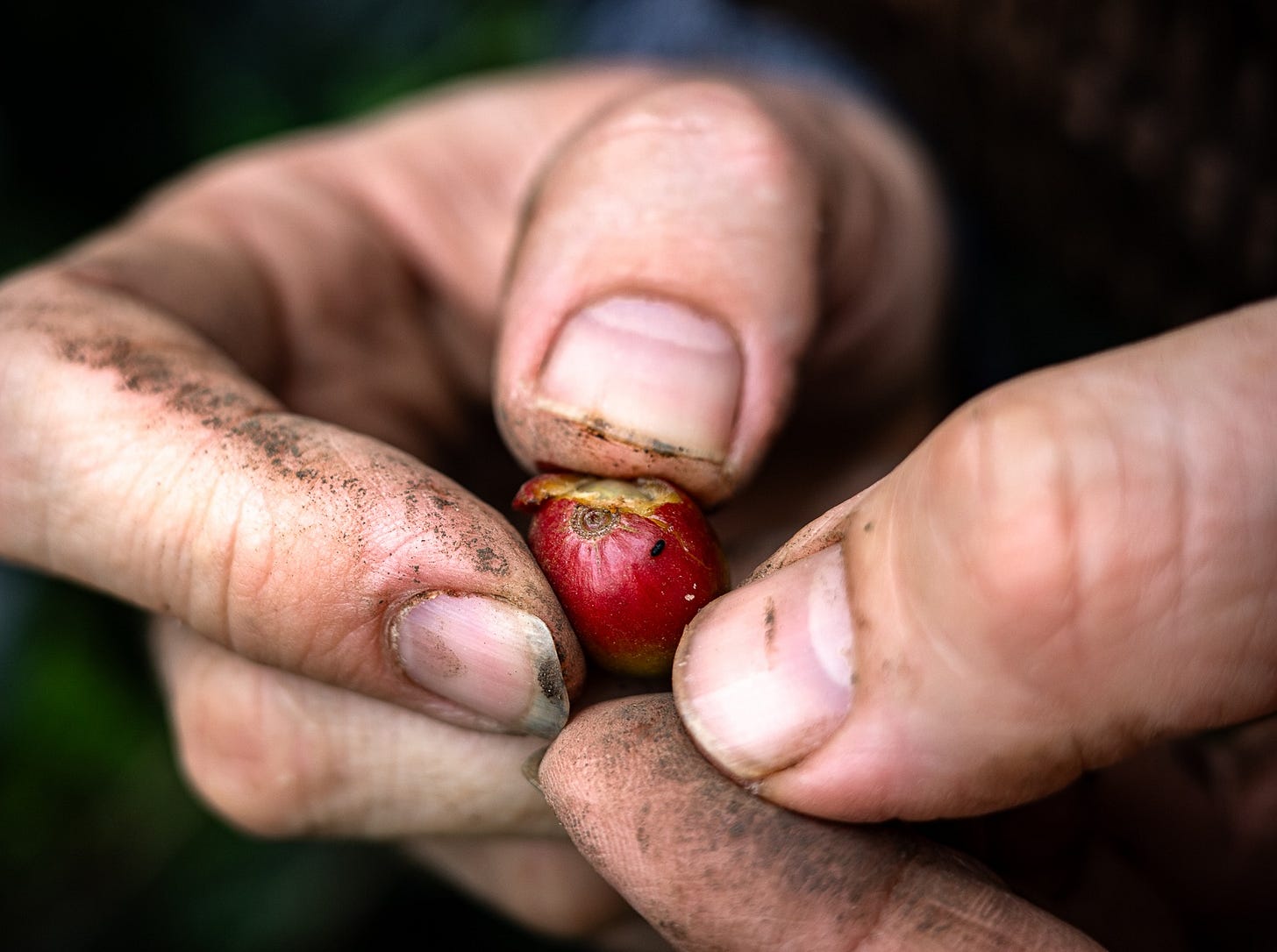
We walk on cobblestone streets among colonial houses painted in colors that chase the last sleep out of our heads. People stand in doorways or behind glassless windows to welcome the day. Vultures circle overhead. Everything here, from the cheerful clatter of horse hooves to the smell of grilled arepas, belongs to a rhythm older than this relatively young (1864) pueblo.
Except for the tuk-tuks, better known here as moto-taxis, that ferry tourists on twisty, unpaved roads to nearby waterfalls or to one of the many family farms.
Welcome to Vascafé
Daniel and I arrive a bit early for our tour on the coffee farm, thinking this might be polite. The family, however, is still enjoying their 3-course lunch at the outdoor table, and I end up feeling embarrassed instead.
We watch the popular bird feeders and their tropical visitors, and admire the tiny stingless honey bees who help pollinate the farm—angelitas, they’re called in appreciation, little angels.
The Vascafé farm, founded by their father, is run by two brothers, Alejandro and Carlos. The latter of whom speaks English with ease and neither of them will show any impatience with our myriad questions that afternoon.
They invite us to the table for coffee. We’d expected a small crowd, a group tour, but on this sunny day in mid-March, we’re the only visitors.
Alejandro carefully prepares the coffee, warming up the pot and cups and using a scale: 8 grams of freshly ground coffee per 100 ml of water. Coffee is not just grown here, his careful gestures say, it is lived. The flavor is dark and fragrant—if only coffee could taste this good everyday.
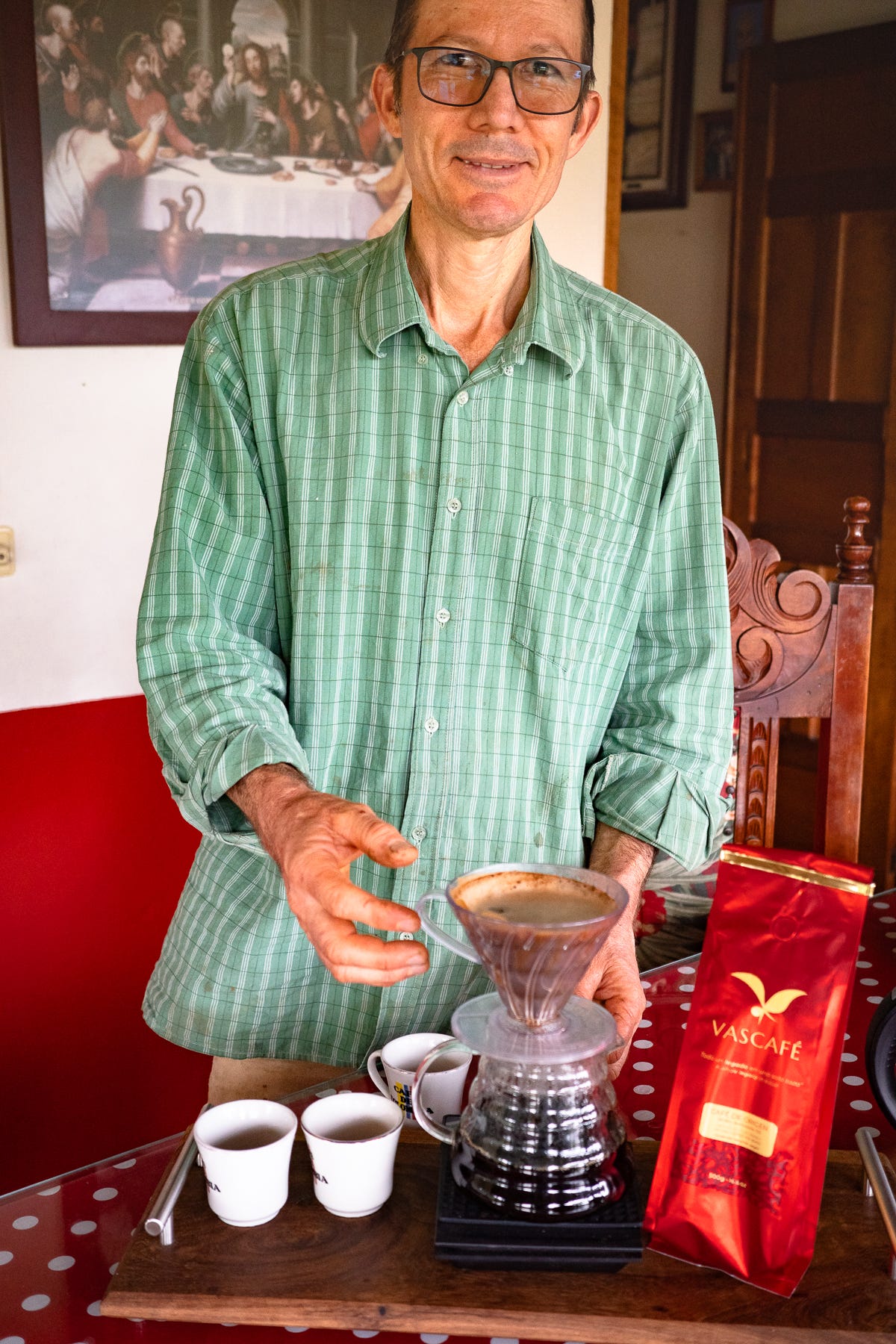
Colombia is the world’s third-largest coffee exporter, after Brazil and Vietnam. In 2024, Colombia sold 12 million 60-kg bags of Arabica beans with a total value of 3.62 billion U.S. dollars. Family farms form the backbone of this coffee production. About 540,000 small coffee farms produce the majority of beans.
“But most Colombians don’t drink coffee like we do,” Alejandro says, indicating our cups, the Chemex carafe.
“Why not?” I ask.
“They cannot afford it. They drink instant coffee instead.”
Cultivation: Growing the Perfect Beans
Fortified by our welcome drink, we continue the tour. Carlos introduces us to their two mature cows and their calfs and encourages us to feed them their favorite snack.
Growing quality coffee starts with the land, the rich volcanic soil kept rich by a mixture of manure, synthetic fertilizers, and a biodiversity of crops.
“We grow native trees among the coffee plants. Bananas, avocados, oranges, and plantains,” Carlos says. “This helps preserve the land’s health and provides good shade for our beans. The flavor is better, more complex, when the fruits mature slowly.”
In Colombia’s equatorial climate, Arabica coffee grows best at altitudes between 1,300 and 2,000m, where it never gets too hot.
Carlos demonstrates how they plant carefully selected beans in what I call the nursery, a small plot of land near the cow shed. Once the shoot is hand-sized, it receives a protective coat and gets replanted. Several weeks later, the plants move to the actual farm where they will produce their first cherries after about a year.
Coffee growing is obviously not an industry here; it’s an inheritance.
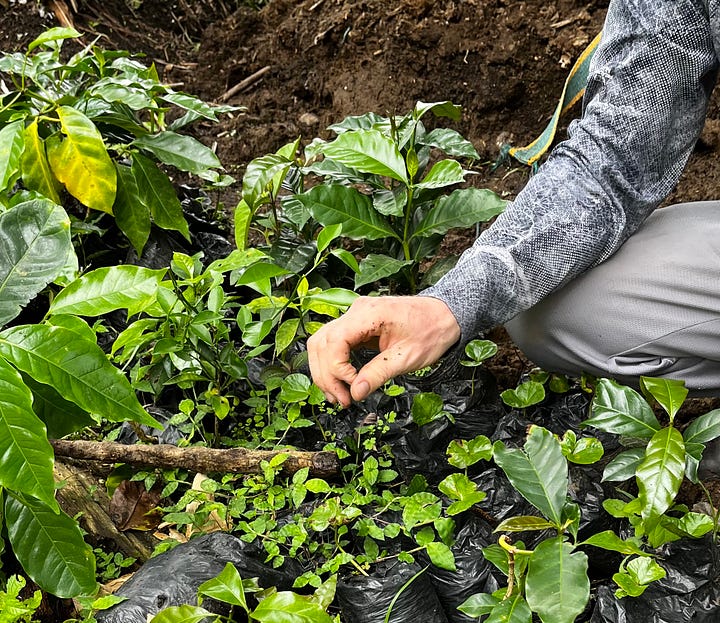
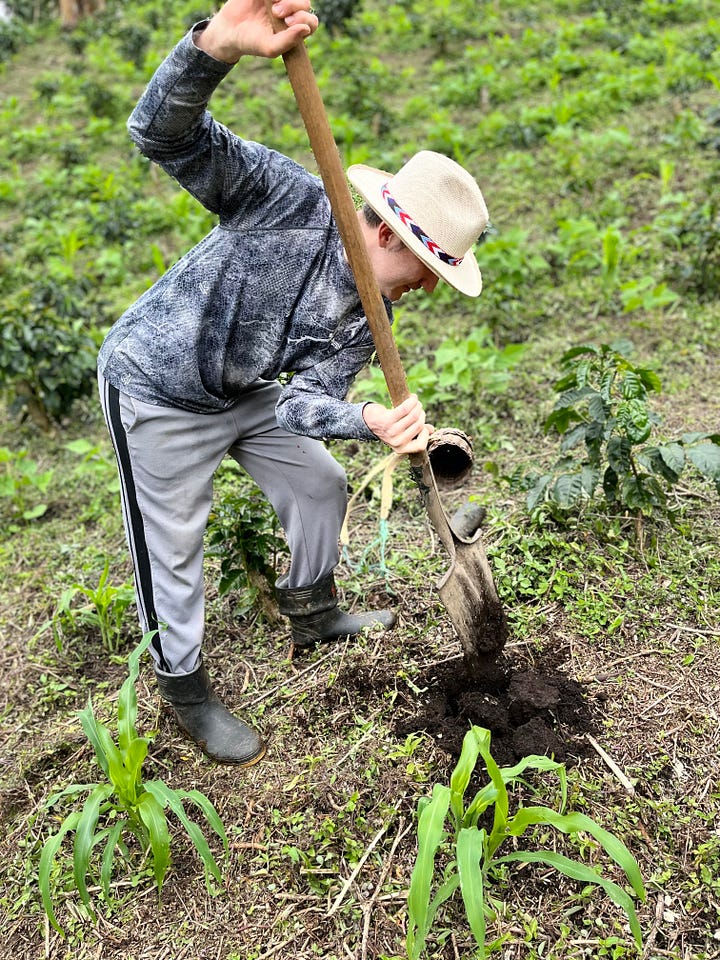
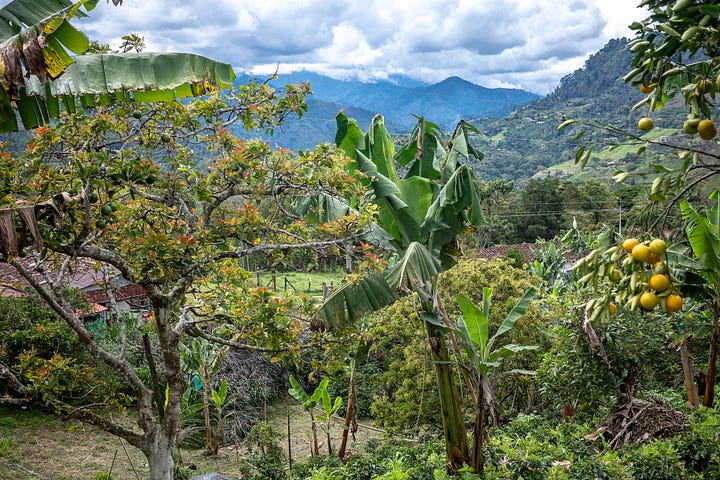
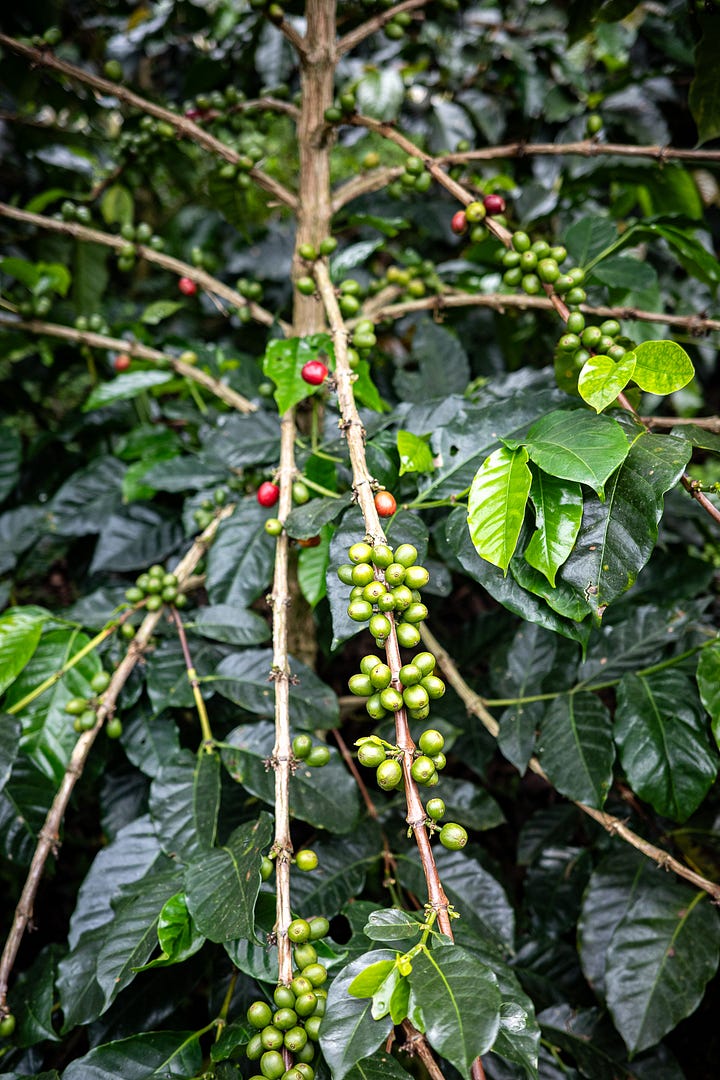
Harvesting: The Ritual of the Hand-Picked Cherry
Coffee farms in Antioquia can harvest twice a year, in spring and fall. Elsewhere in the world, machines may do the work, but in Colombia, hands do. For Vascafé and their 6,000 coffee plants, this is a labor-intensive process.
Daniel and I turn ourselves into pickers and tie baskets around our waists. We walk between the rows of plants and pick only the ripe, red cherries, letting the green ones on the branch to mature. Coffee plants do not ripen uniformly, so pickers must return to the same plants multiple times. This selective harvesting is crucial, because unripe or overripe cherries can negatively impact the final product.
Fortunately, Carlos doesn’t let us labor for too long, because we get the gist quickly: Coffee picking in the tropical sun is hard work.
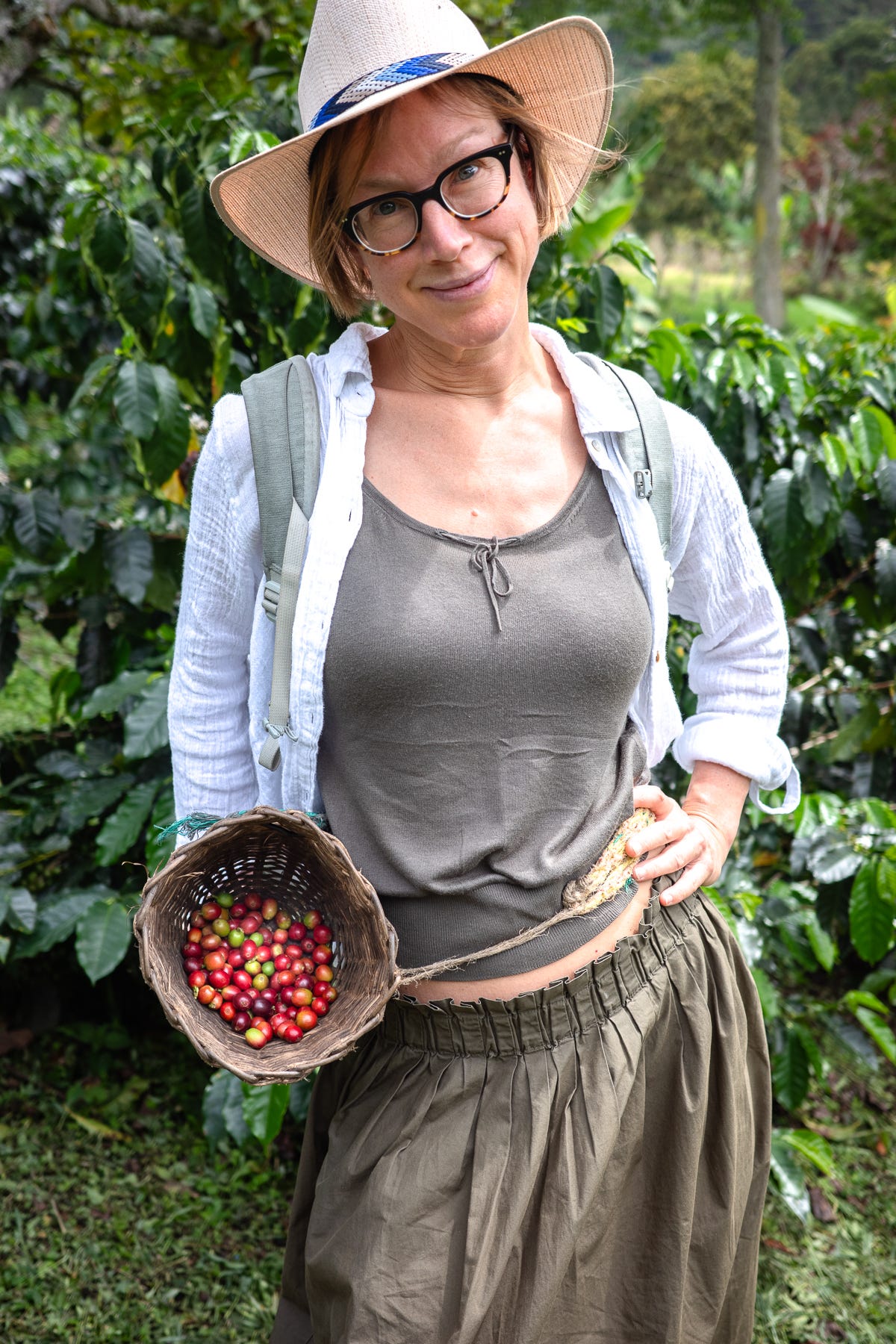
Processing: The Act of Becoming
Carlos asks us to dump our picked cherries into the receptacle of a machine that pulps the fruit and removes the red skins from the beans.
Usually, he lets the beans ferment for a day to break down the remaining mucilage. Today, he washes the beans right away. The best ones sink to the bottom, whereas the immature or damaged beans float on top. This is the first selection. The rejects will be handled separately, destined to become instant coffee.
The selected beans are dried on a drying bed above the cow shed. Depending on the humidity, the drying takes 4 to 6 days. Carlos rakes the beans already there and shows us how he selects the beans here for a second time, separating the good from the bad.
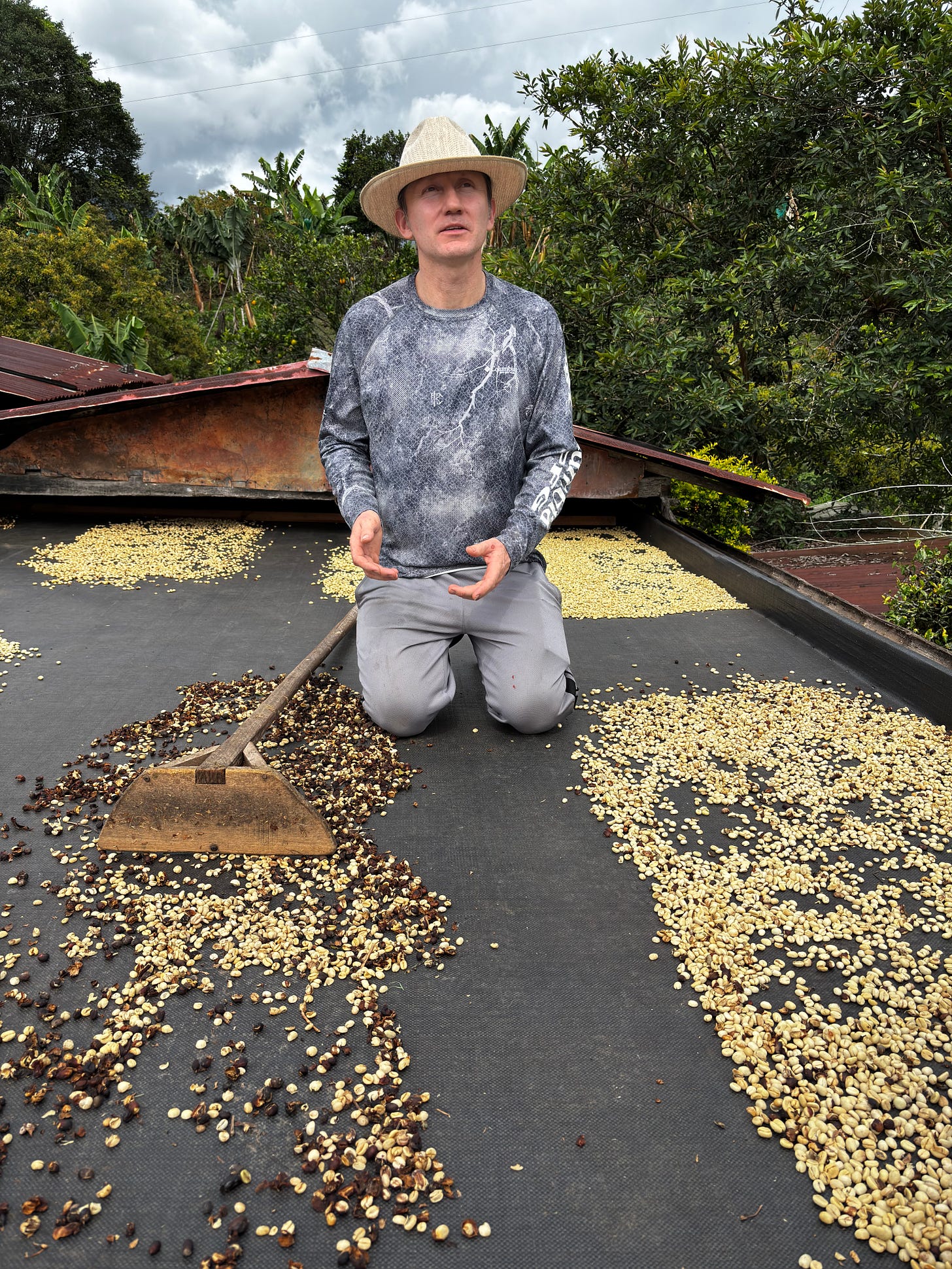
Milling: The Final Selection
After drying, we hull the beans in what looks like a large mortar and pestle. We remove the remaining parchment layer, then gently toss the beans in a filter so the paper-like casings can blow away in the wind.
The final section takes place now: Only the perfect ones make it into the pan for roasting. Usually, Carlos and Alejandro don’t roast their own coffee—this happens in Jardín—but they make an exception when they give a tour, so we get to see the entire process.
While the beans are roasting, Alejandro serves us avocado, coffee pudding, and another cup of freshly brewed coffee. We feel so spoiled!

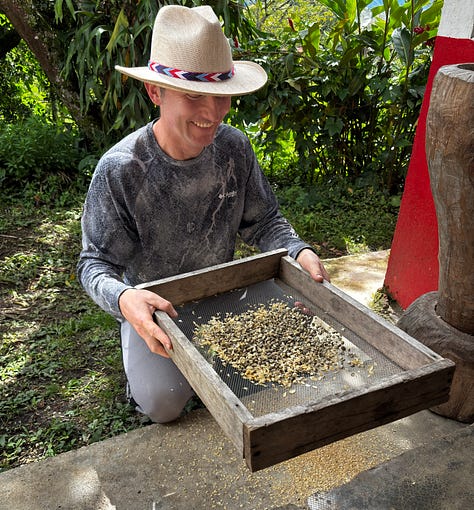
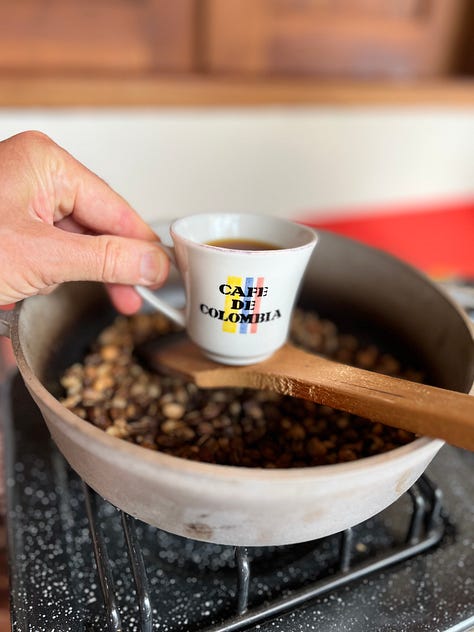
Selling: What’s a Fair Price?
Like many small producers in Jardín, Vascafé sells their coffee to three different markets.
The best beans go to Nespresso for 20,000 Colombian pesos a kilo. That is 5 US dollars. A lot of this coffee ends up in little capsules of 5-7 grams that sell around the world for about 50 US cents per capsule. If I do the math correctly, Nespresso therefore sells their coffee to their consumers for about 83 US dollars a kilo. I’ll let you do the math on the fairness.
Vascafé roasts part of their best beans in town so they can sell it directly to customers like us, who appreciate single-origin, high-quality beans. Unfortunately, they can only sell to customers who come to their farm and cannot ship abroad.
The reject beans are sold for about 4,000 Colombian pesos ($1) to local cooperatives that produce instant coffee.
What Does the Future Hold?
The rain comes when it shouldn’t. The heat lingers longer than usual. Harvests sizes fluctuate. The coffee leaf rust, a disease that weakens plants, spreads through the country with each unexpected shift in temperature. Carlos talks quietly about the challenges climate change poses, as if speaking too loudly might summon more problems.
I’ve learned that some farmers in Vietnam are growing more Robusta beans, since that is a less finicky crop than Arabica. Carlos and Alejandro have no such plans yet. They will stay alert and adapt to new circumstances, but there’s only so much they can do when the world moves in ways they cannot control.
A sentiment we probably all feel right now. Let us enjoy our coffee while we can and let it inspire us to help move the world in a better direction.
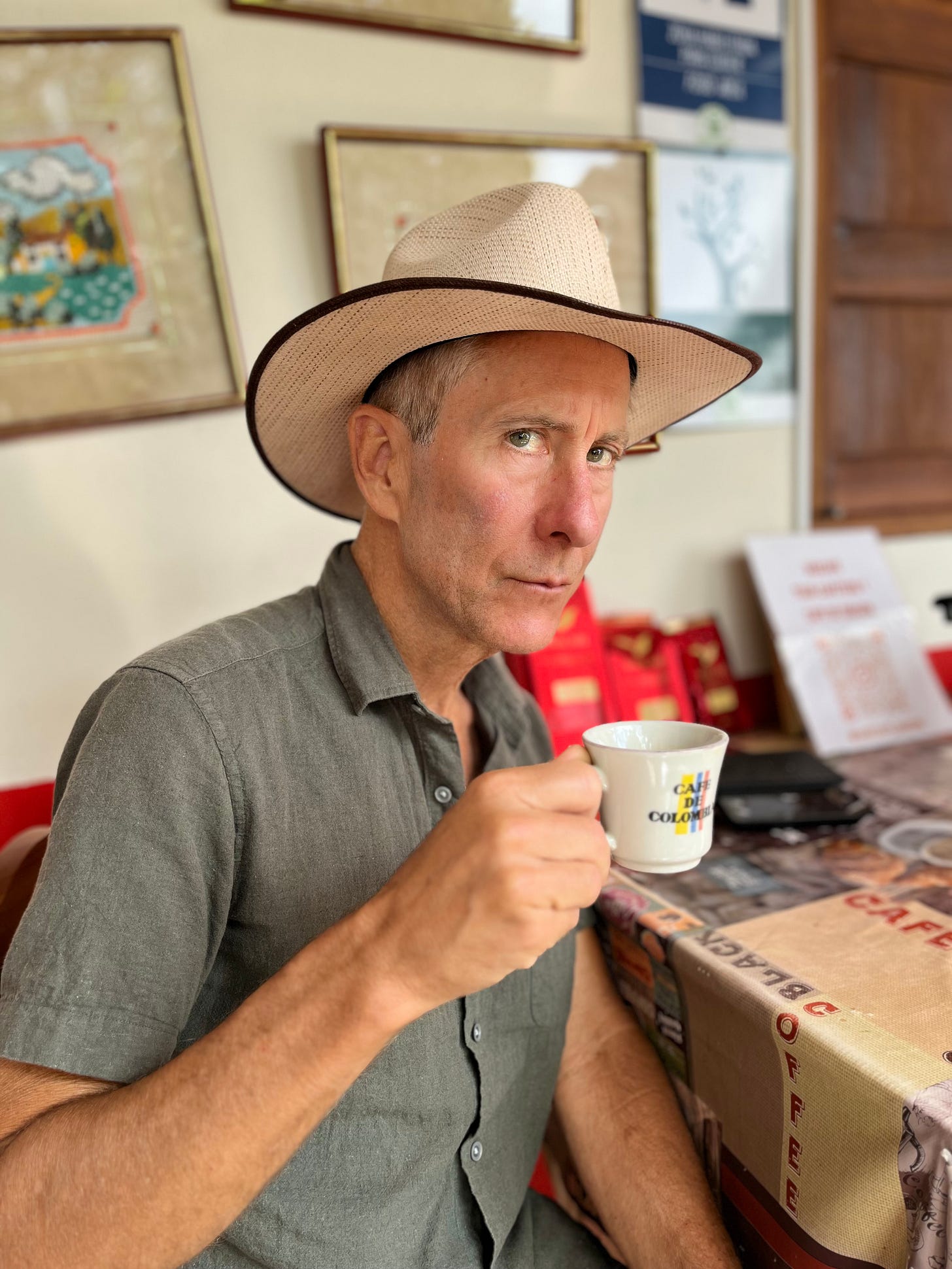
Practical Information: Spread the Word
Vascafé in Jardín is happy to receive visitors from around the world. They give tours in Spanish and English. There’s no set schedule, so it’s best to contact them directly and make an appointment. They charge a little bit of money—worth every peso.
Vascafé email: vascafejardin@gmail.com
Vascafé on WhatsApp: +57 311 3703682
Related Posts
If you enjoyed this post, you might also be interested in reading:
Time to Say Goodbye
Daniel and I are in Minca, a small mountain town an hour inward from the Caribbean. Our wooden cabin is small and basic, but our daily visitors are many and royal. It’s become our new habit to spot a bird, notify one another, and quickly look up what species we’re in luck of meeting. But capturing them on camera remains hard. Perhaps we should stop trying and just treasure the moments, which are as fleeting as the birds themselves.
All my best,
Claire
P.S. By liking, sharing, and commenting, you will draw more readers to my work. And I genuinely love your feedback. I’m grateful for your support.







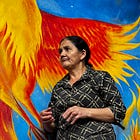
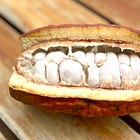
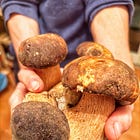
Excellent post on farming and milling coffee beans in Colombia. I would love to have a cup of that fresh brewed coffee. Thanks so much for posting this.
A privilege and an honor to be taken in by such humans. Wonderful, Claire! Fairness when it comes to $$? There isn't much out there, is there? Thanks for sharing all the info, wishing I could buy VASCAFE. J